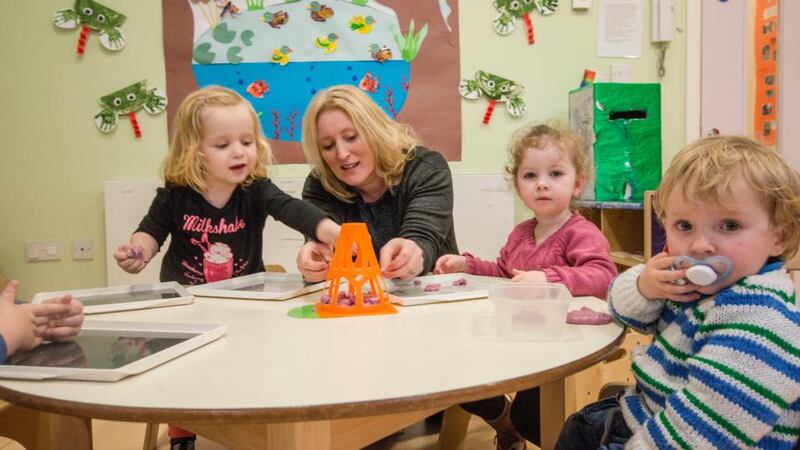The little boy is fearful of painting; he doesn’t like it and won’t join in when other children are doing it.
But the other day in his childcare centre, he picked up a paintbrush and went and did it himself.
His key worker, who has trained in Marte Meo, didn’t crowd him by gushing, “Oh it’s so fantastic, you’re painting”. She just responded calmly with: “I see you’re painting.”

“He turned around and smiled at her, and she smiled at him, and that was a perfect piece of interaction,” says the centre manager, Catherine O’Brien, who observed it.
Because this staff member had worked hard at building a relationship and connection with this child, “she appreciated what a very big, brave thing he had done”. He, in turn, felt affirmed in what he was doing.
That might be a tiny interaction but it is on such tiny interactions that they can build, says O’Brien, who manages three community-based childcare facilities run by the National Association of Building Co-operatives (Nabco), in Dublin’s East Wall, Brookview in Tallaght and Lucan, for families living in co-operative housing.
Small children, no less than adults, like to feel that their efforts have been noticed and valued.
Child’s learning
Being very present in the child’s learning means you can also push it on when the opportunity arises, she points out.
“If a child is building something four blocks high, you’ll supply the fifth block and say ‘have a go’. They might not have the skill to balance it quite yet and it might fall; maybe on the third or fourth time, they’ll get it.”
But if that block was missing and you didn’t supply it, the child wouldn’t have had the chance to try.
“It’s about stretching that learning and giving the affirmation when that kind of thing happens.”
Having run her own home-based playgroup for 20 years, O’Brien discovered Marte Meo when she went on to study for an early childhood degree at NUI Maynooth.
She immediately recognised it as an approach that was highly practical.
So when she got the Nabco job, she organised for herself and all the staff in the three centres to attend Marte Meo training sessions organised by Early Childhood Ireland last summer.
“I wanted to give people a toolkit to deal with children who might have some level of additional need.”
There are several such children in each of their centres. Some, because of their age, may not yet have a diagnosis and others just have behavioural issues “that may not need long-term intervention but are certainly a problem when you’re there”, she says.
Training into practice
Putting training into daily practice can often be a challenge, but in this case all the staff found it easy to apply “because it’s so very, very simple”, she says.
“It was solving problems for us. I could see it working.” She regards it as a culture that informs all their work with children and parents.
The other day O’Brien was going into the toddler room at the East Wall centre and a little boy, who doesn’t talk yet, saw her coming in the door. He ran over to where the trains are kept, pulled out the box and looked back at her.
On another day she might have felt she was too busy to linger, “but I knew it was very important to him that I join him in that little look that he had given me, which was ‘Come and play trains with me’,” she says. “So I did go and play trains with him, and I thoroughly enjoyed it.”
It becomes about the child and what they are doing: not “We have to do this and that with them.”
Marte Meo works for children with additional needs, she continues, because “it is about creating that space where you are not trying to control the child, you are trying to join with the child”.
“You are trying to work from the child’s strengths. And I always think to work from a child’s strengths puts you halfway along the way to do things.”
Likewise, O’Brien also sees the value of the “strength-based” approach it takes when dealing with parents.
They explain to parents how they have been working with a child to, for example, develop attention skills by saying “I see that you are listening” when they catch them doing it.
“It’s much better than telling the parents, ‘Your child has a problem’,” she points out.
“You join where the child is at and support the parents to come along with you.” And because it’s so simple – say what you see and affirm your child – the parents are likely to try it at home and notice the difference.
“It is not something that you would just do when you have a problem and that is the beauty of it,” O’Brien adds.
“I think the more you do it when you don’t have a problem, the fewer problems you will actually have.”










